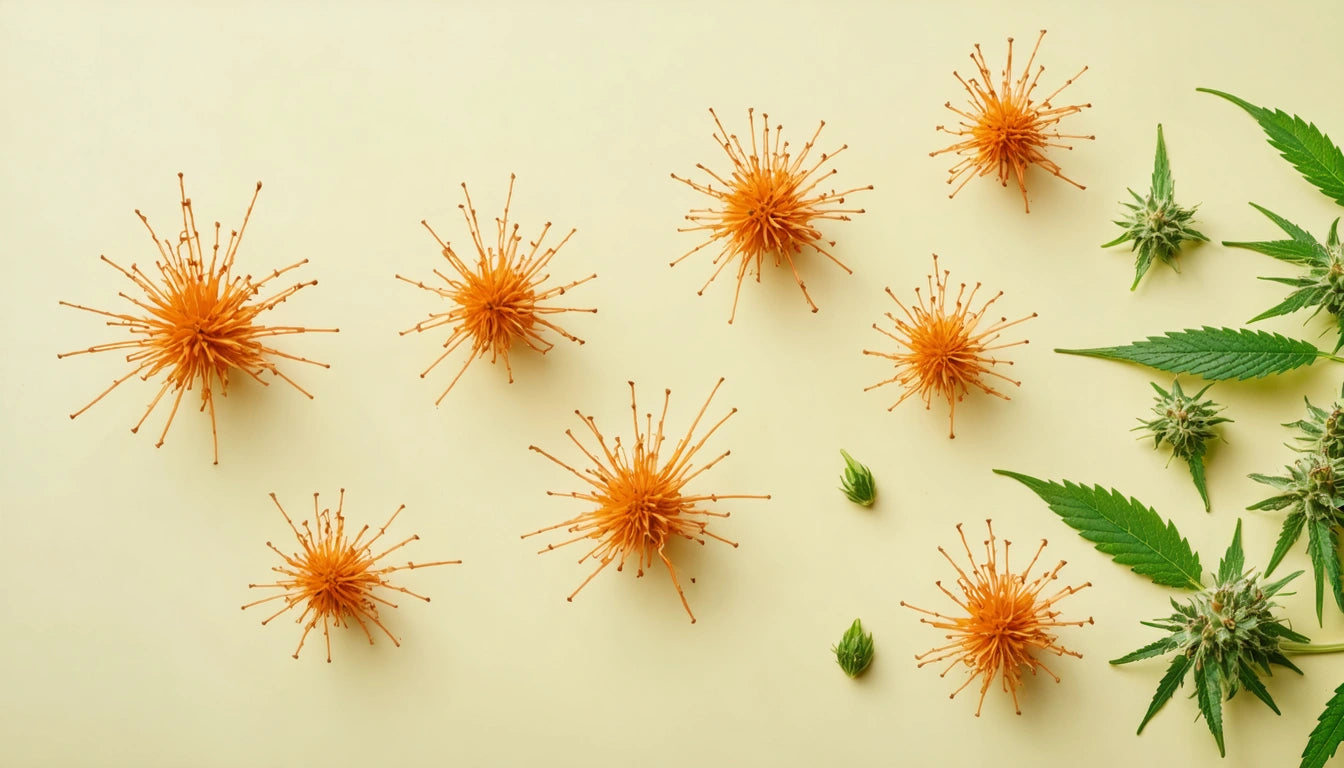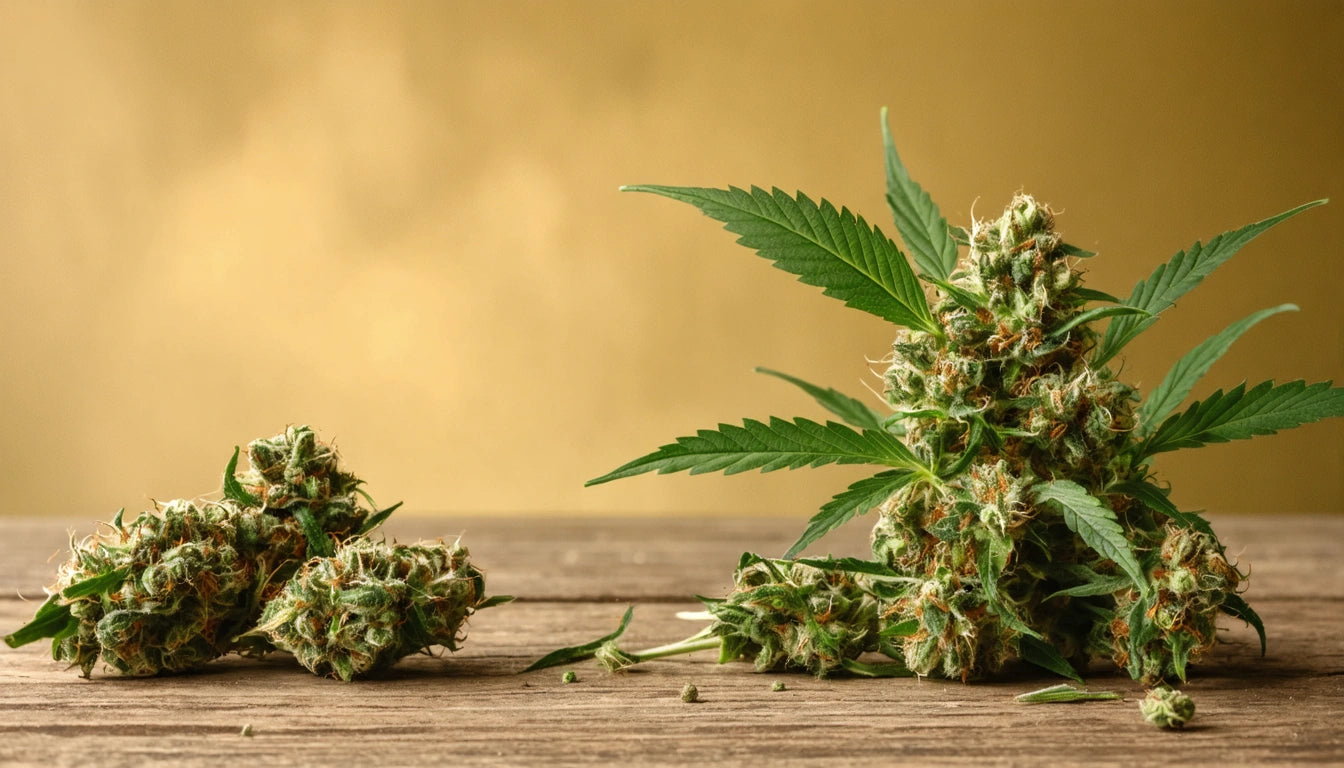Table of Contents
- What Are the Orange Hairs on Cannabis Plants?
- Purpose and Function of Cannabis Pistils
- Orange Hairs as Maturity Indicators
- Do Orange Hairs Indicate Better Quality?
- Common Misconceptions About Orange Hairs
- Identifying Healthy vs. Unhealthy Pistils
- The Future of Cannabis Evaluation Beyond Visual Indicators
Understanding the Significance of Orange Hairs on Cannabis Plants
When examining cannabis flowers, one of the most distinctive features that catches the eye is the collection of orange or reddish-brown hairs covering the buds. These vibrant strands often prompt questions from both new and experienced users: what are the orange hairs on weed, and do they indicate something positive or negative about the plant's quality? This comprehensive guide explores the biology, purpose, and significance of these colorful structures.
What Are the Orange Hairs on Cannabis Plants?
The orange hairs visible on cannabis buds are botanically known as pistils or stigmas. They are reproductive structures of the female cannabis plant, designed to catch pollen from male plants. Initially, these pistils appear white or cream-colored, gradually changing to yellow, orange, red, or brown as the plant matures. This color transformation is a natural part of the cannabis flowering cycle.
According to this guide on identifying cannabis, pistils are just one of many visual characteristics that help distinguish quality cannabis from subpar products. They're particularly prominent in sinsemilla (seedless) cannabis that's grown for consumption.
Purpose and Function of Cannabis Pistils
Reproductive Role
The primary function of pistils is reproduction. In nature, these hair-like structures extend from the calyx of female flowers to catch male pollen carried by wind or insects. When pollen lands on a pistil, it travels down to fertilize the ovule, eventually producing a seed. In commercial cannabis cultivation, male plants are typically removed to prevent fertilization, allowing females to focus energy on producing resin-rich, seedless flowers.
Evolutionary Advantage
The bright coloration of mature pistils may have evolved as a visual signal to pollinators or as protection against environmental stressors. Similar to how cannabis sometimes turns purple due to anthocyanin production, pistil coloration represents the plant's response to its environment.
Orange Hairs as Maturity Indicators
One of the most practical applications of observing pistils is determining harvest readiness. As cannabis plants mature:
- Young plants display primarily white pistils
- Mid-maturity plants show a mix of white and orange pistils
- Harvest-ready plants typically display 70-90% darkened pistils
Cultivators often use specialized tools to examine pistils closely. Quality processing equipment helps producers handle mature flower while preserving these delicate structures during the trimming and preparation process.
Do Orange Hairs Indicate Better Quality?
The question "are orange hairs on weed good or bad" doesn't have a simple answer. While pistils do indicate maturity, they alone don't determine potency or quality. Consider these factors:
Potency Relationship
Contrary to popular belief, the pistils themselves contain minimal cannabinoids. The resin-producing trichomes (the crystal-like structures on cannabis) are responsible for cannabinoid and terpene production. However, pistil maturation often coincides with peak trichome development, creating an indirect relationship between orange hairs and potency.
Visual Appeal
Orange hairs contribute significantly to the aesthetic appeal of cannabis. Strains with abundant, vibrant pistils often command premium prices in dispensaries partly because of their visual distinctiveness, as noted in this resource on cannabis terminology.
Common Misconceptions About Orange Hairs
Several myths persist about what orange hairs on weed indicate:
Myth: More Orange Hairs Mean Higher THC
While pistils may coincide with cannabinoid development, there's no direct correlation between pistil abundance and THC content. Some high-THC strains have relatively few pistils, while some lower-potency varieties display abundant orange hairs.
Myth: Orange Hairs Indicate Contamination
Sometimes consumers mistake natural pistil coloration for mold or contamination. Unlike mold, which appears powdery or fuzzy, pistils have a distinct hair-like structure and emerge directly from the calyx. Understanding common cannabis plant issues can help distinguish between natural features and potential problems.
Identifying Healthy vs. Unhealthy Pistils
Healthy pistils should:
- Display vibrant coloration (orange, red, or brown depending on strain)
- Maintain their structure without appearing brittle or disintegrated
- Be distributed relatively evenly across the flower surface
- Change color gradually during maturation
Unhealthy signs include:
- Premature darkening (may indicate heat stress)
- Pistils that appear stunted or underdeveloped
- Abnormal coloration (black or gray may indicate bud rot)
The aroma profile of cannabis with healthy pistils should also align with the strain's expected terpene profile, without musty or ammonia-like scents that might indicate degradation.
The Future of Cannabis Evaluation Beyond Visual Indicators
While visual cues like orange hairs have traditionally guided cannabis assessment, the industry is evolving toward more sophisticated evaluation methods. Laboratory testing for cannabinoid profiles, terpene content, and contaminant screening provides more reliable quality indicators than appearance alone.
For consumers wondering what are orange hairs on weed signifying about their purchase, it's important to consider them as just one factor among many. The presence of orange pistils indicates proper maturation, but overall quality assessment should include examining trichome development, aroma, cure quality, and when possible, laboratory test results.
As cannabis knowledge continues to advance, consumers are becoming more educated about the complex factors that determine cannabis quality beyond simple visual characteristics. The orange hairs that have long fascinated cannabis enthusiasts remain an important botanical feature, but their significance is now better understood within the broader context of cannabis plant biology and cultivation practices.











Leave a comment
All comments are moderated before being published.
This site is protected by hCaptcha and the hCaptcha Privacy Policy and Terms of Service apply.